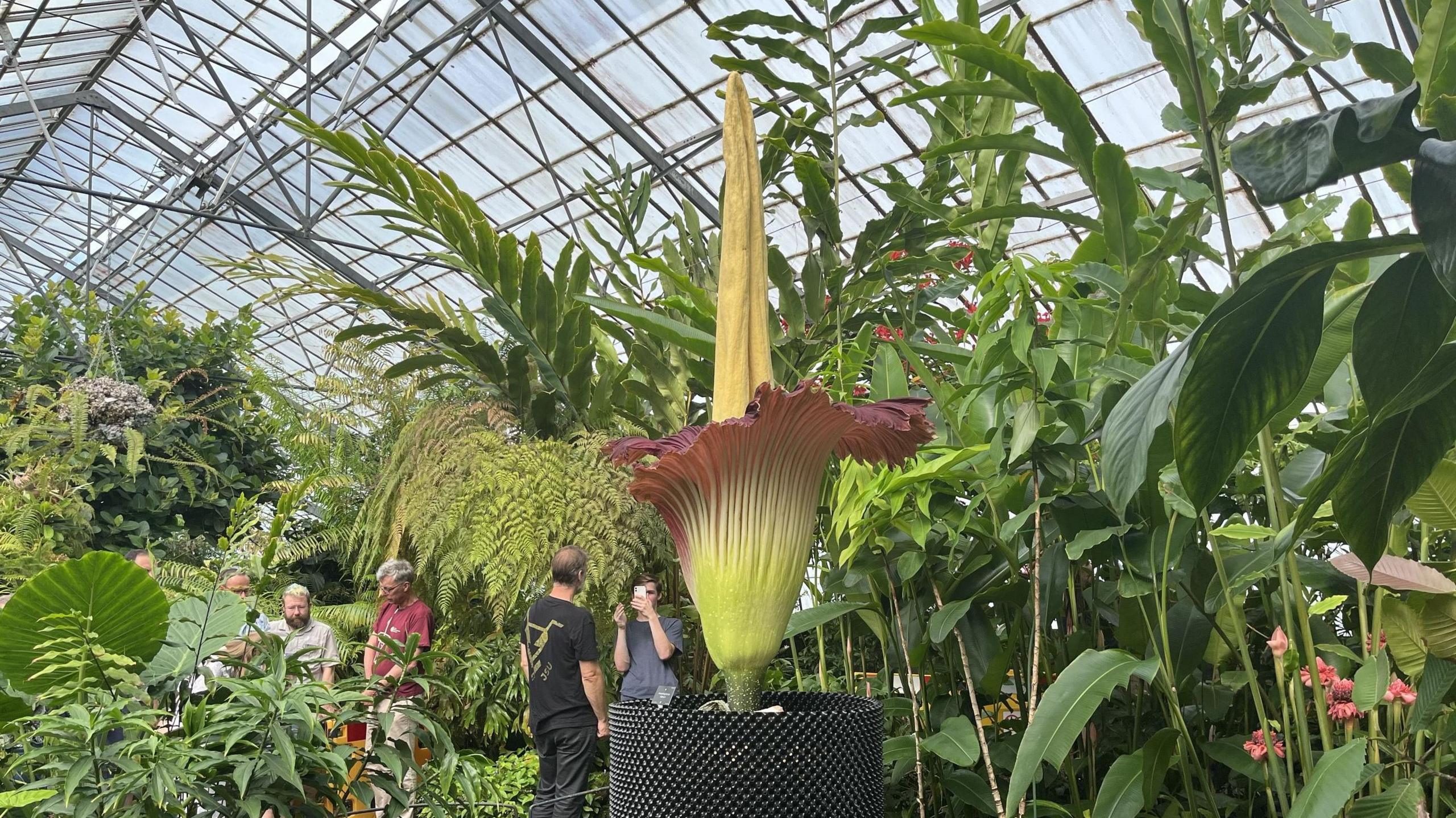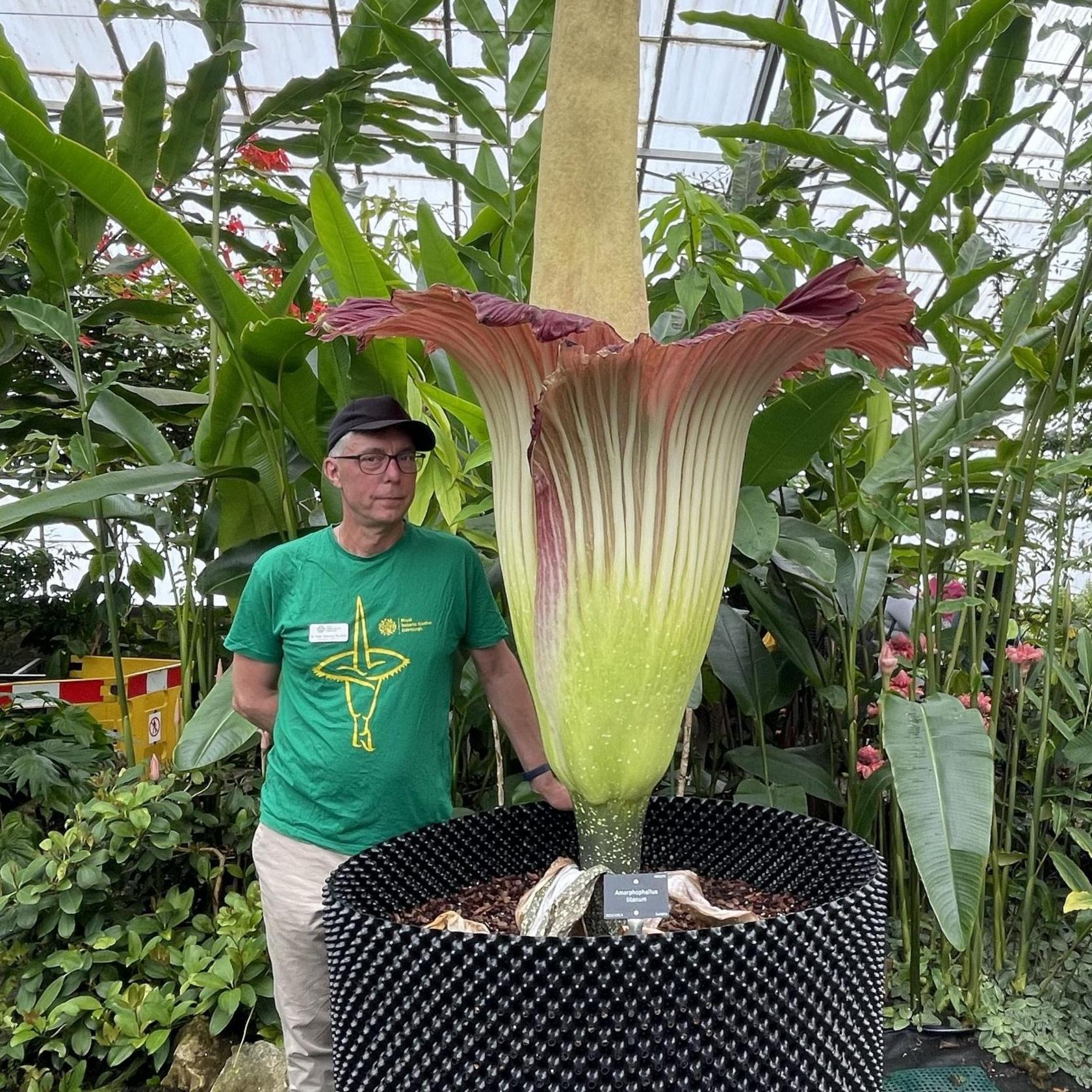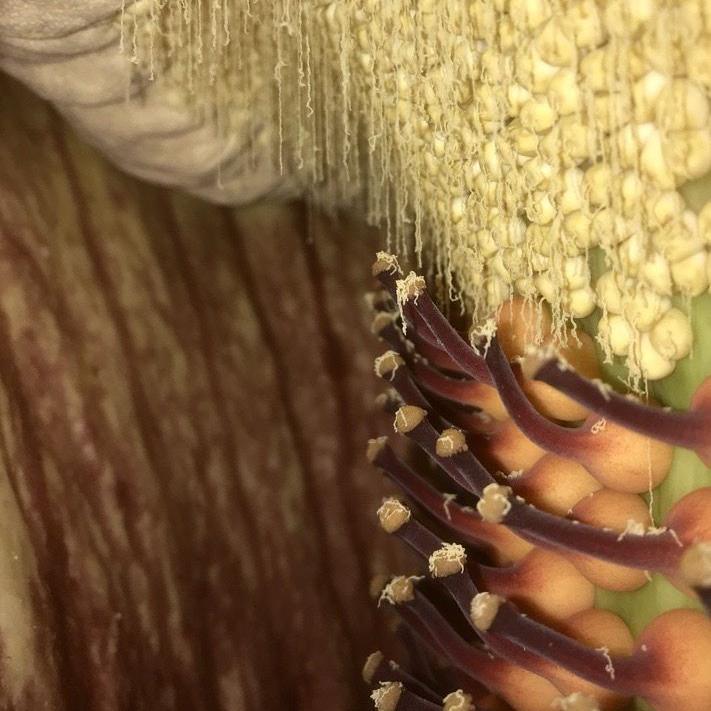Why is a flower that smells like rotting flesh so popular?

Thousands have queued to see the "corpse flower" bloom for the first time in two years
- Published
The titan arum plant is famed for producing the stench of rotten meat and is ominously called the “corpse flower” in its native Sumatra.
You might think this endangered plant is doing everything in its power to be as unpleasant as possible - but the smell is actually designed to lure carrion-eating insects for pollination.
And crowds have flocked to catch a glimpse, and a sniff, of the “world’s smelliest plant” after it bloomed for just the fifth time at Edinburgh’s Royal Botanic Gardens.
More than 2,500 people have crammed in to the institution’s glasshouse over the last two days for a chance to see the 2.6m (8.7ft) tall bloom before it disappears for at least the next two years.
Helping save the world's plants for 350 years
- Published15 August 2020
Botanic gardens topple castle in visitor rankings
- Published31 March 2021
Nicknamed “New Reekie” in honour of Edinburgh's former moniker, the plant is scientifically known as Amorphophallus Titanium.
“To me it smells like a beach with rotting seaweed, it almost has a fishy sort of smell,” said tropical plant expert Dr Axel Dalberg Poulsen - who cares for and studies the plant at the gardens.
“When the smell is really bad, at its strongest, it can stick to your clothes, you can be smelling it for days afterwards.”

Dr Dalberg Poulsen said the plant "may never die"
The plant was gifted to the Gardens in 2002 after being sown at the Hortus Botanicus facility in the Dutch city of Leiden.
At that stage the “corm,” the underground structure from which the plant grows, was the size of an orange.
Eight years later, the gardens had to borrow scales used to weigh elephants at Edinburgh Zoo, after it grew to more than 150kg – making it one of the largest specimens ever recorded.
The corm spends long periods absorbing massive amounts of energy and nutrients from the soil before releasing it in a surge that creates one of the tallest flowering structures of any plant.
It did not flower for the first time until 2015, but has since steadily bloomed every two to three years.
“In a sense, it might never die,” said Dr Dalberg Poulsen.
“The first time it flowered here in 2015, we thought it would die after it finished flowering, it would have exhausted itself but it didn’t.
“Tropical plants have a root that grows along the ground, they can do that theoretically forever.”
Cheese, fish and rotten onions
The plant has been a popular attraction for horticultural enthusiasts in Europe since first being described by Italian botanist Odoardo Beccari in 1878.
A specimen brought to London’s Kew Gardens brought thousands of visitors to its first bloom in 1889 due to its strong smell and otherworldly appearance.
Renovations to the glasshouses in Edinburgh meant visitor numbers were restricted and access to the plant was ticketed.
Sadie Barber, the gardens’ research collections manager, said the scent is at its strongest just after the bloom and is usually emitted at night when pollinators in its native environment are most active.
“Some people have really sensitive noses and get really nauseous and have to leave,” she said.
“People think it smells like cheese, rotten meat, fish, rotten onions, even some people smell sweetness, which is odd. But I think the most accurate one really is rotting meat, because that is what it is trying to mimic.
“Thankfully, we haven’t had anyone throwing up yet.”

The smell is emitted from inside the plant to attract carrion-eating insects which help pollenate it
However, not everyone is turned off by the scent.
Horticulturist Paulina Maciejewska Daruk said one woman described it as “lovely” when she visited the glasshouse during a previous bloom.
She said the plant once grew “abundantly” in Sumatra's remote, monsoon-soaked rainforests.
However, deforestation caused by farming and logging on the Indonesian island had heavily restricted its environment.
The International Union for Conservation of Nature (IUCN) ranked it as facing a “very high risk of extinction” in the wild.
She said it was now far more common to see the plant in a botanical institution.
“The steeper slopes in Sumatra were safe from being deforested and turned into fields for farming,” she said.
“But the more gentle slopes were not. They are gone, and people are getting desperate for resources, so there is a lot of logging, that is why it is endangered now.
“It is unusual to see the flower now if you were on holiday in Sumatra unless you go somewhere really remote in the right season.”
- Published1 August 2019

- Published25 September 2021
